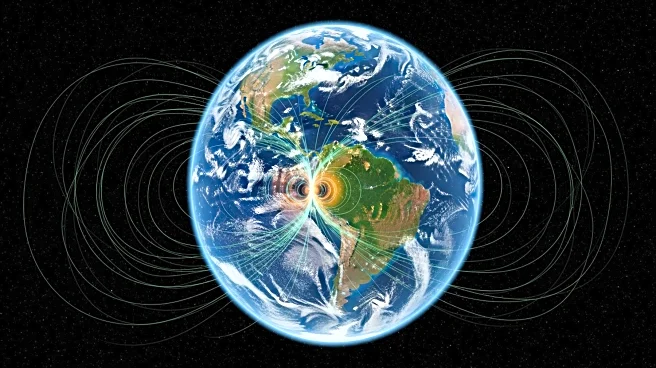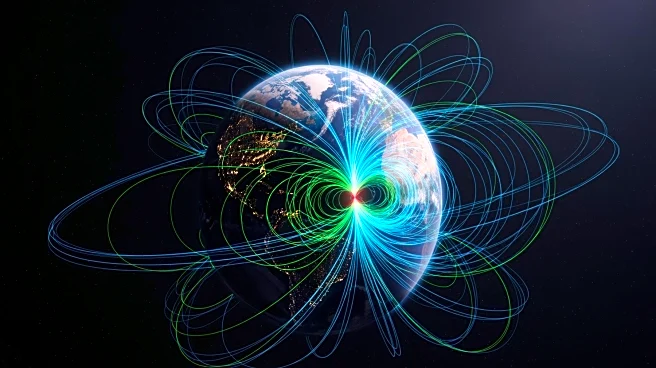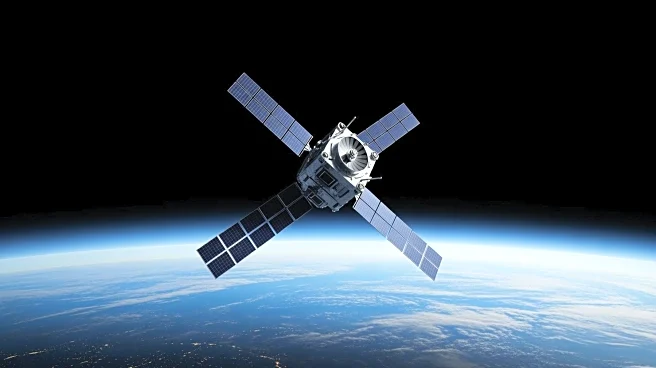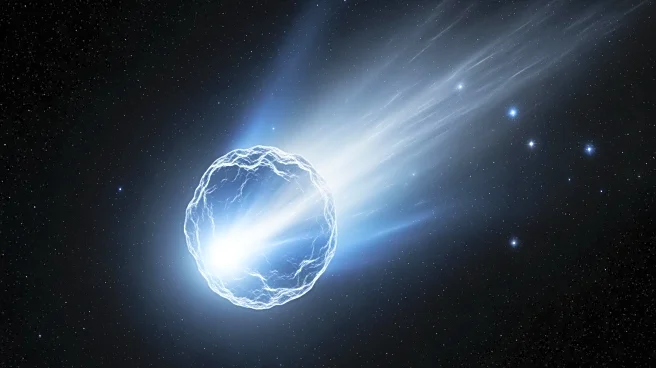What's Happening?
NASA is closely monitoring the South Atlantic Anomaly (SAA), a vast region of weakened magnetic intensity stretching between South America and southwest Africa. This anomaly, which has been expanding since 2014, poses a significant risk to satellites
and spacecraft, including the International Space Station, as they pass through the area. The weakened magnetic field allows high-energy protons from the Sun to potentially short-circuit and damage onboard systems. The anomaly is likened to a 'dent' in Earth's magnetic field and has been a subject of study due to its potential to cause significant data loss or permanent damage to satellite components. The anomaly's expansion and the resulting exposure to charged particles necessitate routine shutdowns of spacecraft systems to mitigate risks.
Why It's Important?
The South Atlantic Anomaly's impact on satellite operations is significant, as it can lead to malfunctions and data loss, affecting communication, navigation, and Earth observation capabilities. The anomaly's growth and the potential for it to split into two distinct cells could further complicate satellite operations. Understanding and predicting the behavior of the SAA is crucial for maintaining the integrity of space-based technologies that are vital for global communications and data collection. Additionally, the anomaly provides a unique opportunity for scientific research into Earth's magnetic field and its underlying processes, which are essential for understanding geomagnetic phenomena and their implications for technology and life on Earth.
What's Next?
NASA continues to track the SAA to better understand its dynamics and potential future developments. Ongoing research aims to improve predictive models of the anomaly's behavior, which could help in developing strategies to protect satellites and other space assets. The anomaly's potential to split into two cells is a key area of focus, as it may alter the way satellites are affected. Continued observation and research are necessary to anticipate changes in the anomaly's morphology and to refine models that predict its impact on space operations.













